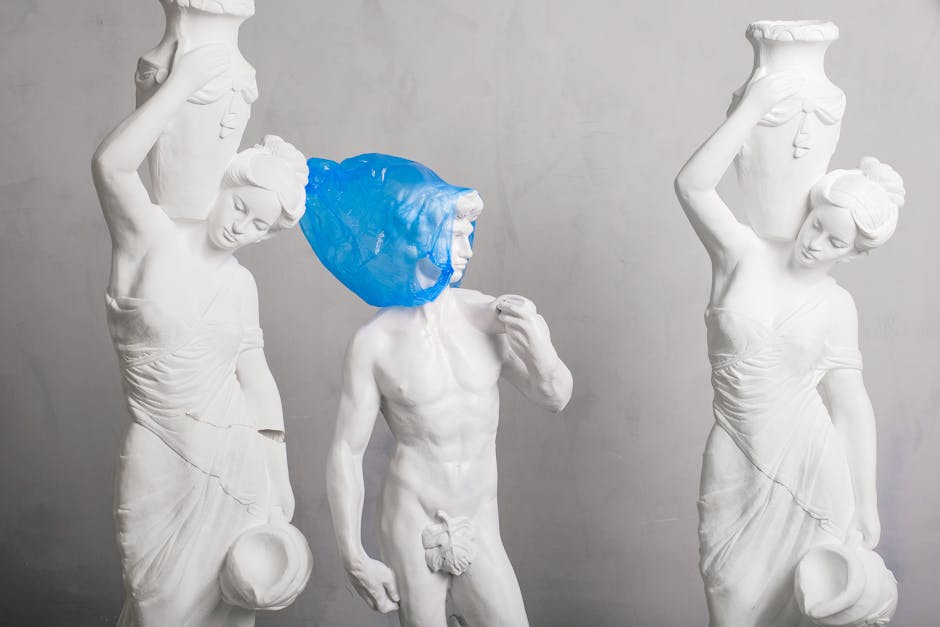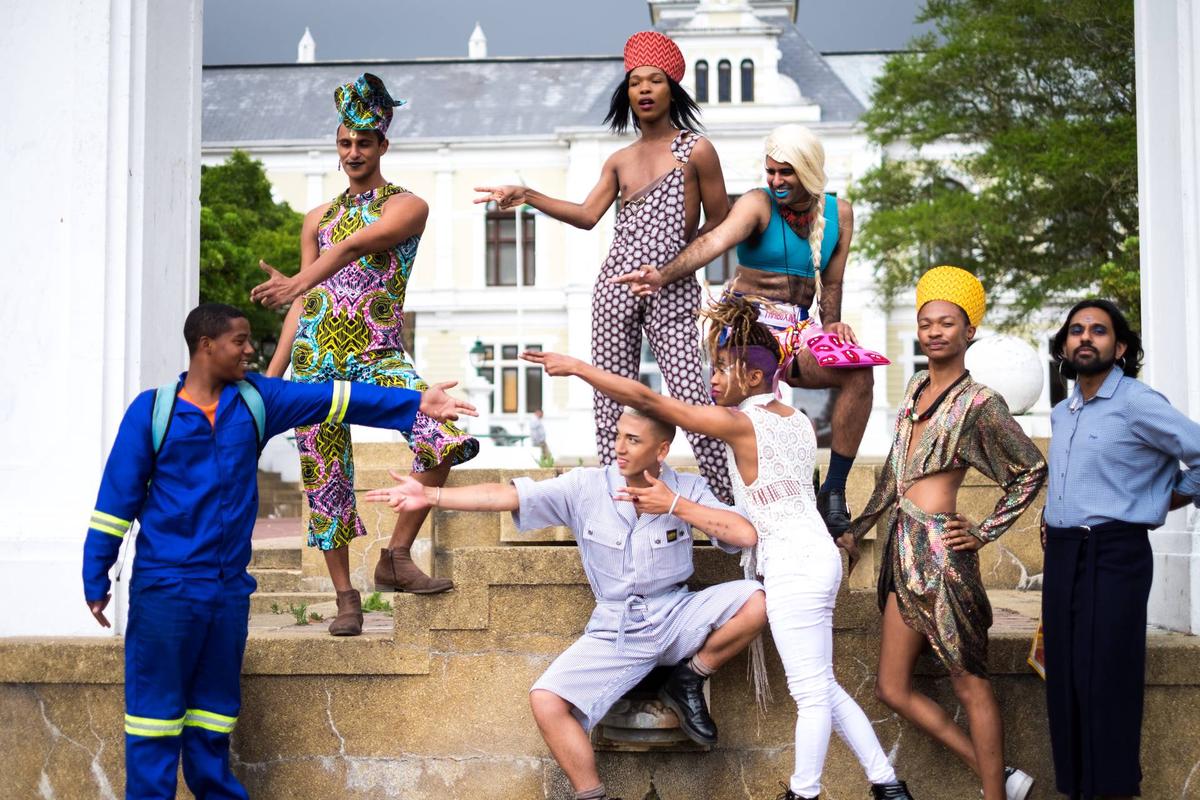Historical Gender Norms in Art
Art has long mirrored societal structures, capturing prevailing norms and ideologies. The evolution of gender dynamics within art criticism reveals persisting biases in both the creation and interpretation of art.
Historically, art depicted gender according to societal hierarchies:
- Classic works often presented women as passive subjects—muses or objects of beauty
- Men were portrayed as active, authoritative figures
- Renaissance art frequently relegated women to roles reinforcing the male gaze
The 20th century brought shifts, prompted by movements like feminism. Artists in the 1960s and 1970s began challenging limited portrayals, advocating for multifaceted representation of women beyond traditional aesthetics. Judy Chicago's The Dinner Party and Mary Beth Edelson's Some Living Women Artists/Last Supper critiqued male-dominated art history and religious symbolism.
Despite women's contributions, artists like Jackson Pollock and Mark Rothko dominated movements such as Abstract Expressionism. Women like Lee Krasner and Elaine de Kooning faced exclusion and often had to defend their work's validity.
Artists like Martha Rosler used art to question domestic roles prescribed to women. Her work Semiotics of the Kitchen critiqued constraints on women in both art and society through powerful visuals.
As conversations about gender fluidity and intersectionality widen, art critique must adapt. Stories now explore identities intersecting race, class, and gender. Contemporary critics are challenged to view art through a more expansive lens where the artist's identity enriches understanding without constraining it.
This shift sparks change in how art is showcased and sold, raising questions about authenticity and commodification. While traditional norms viewed art as static representations, contemporary critique embraces dynamic dialogues acknowledging the diverse spectrum of human identity.
Gender Dynamics in Abstract Expressionism
Abstract Expressionism provides a lens to examine gender dynamics in the mid-20th century art world. As the movement flourished in 1950s New York, women were welcomed as creators but remained marginalized.
Led by figures like Jackson Pollock and Willem de Kooning, Abstract Expressionism was imbued with notions of masculinity. The large-scale canvases with vigorous strokes were perceived as embodying the male experience, inadvertently sidelining female artists.
Women like Lee Krasner and Elaine de Kooning carved out spaces for themselves:
- Krasner, married to Pollock, faced scrutiny both for her artistic value and how it related to her husband's work
- Elaine de Kooning balanced roles as an artist, critic, and teacher, challenging boundaries set for Abstract Expressionists
Societal pressures dictated that women balance artistic endeavors with domestic expectations. Many resisted by avoiding marriage or families, while others adapted their roles.
Male artists often used feminine imagery to explore the subconscious, sometimes perpetuating reductive stereotypes. Willem de Kooning's Women series, painted with aggression, reinforced perceived male dominion over the female form.
Despite these dynamics, female Abstract Expressionists left an indelible mark. They resisted being defined solely by male associations and encouraged later generations to challenge gender conventions. Their resilience continues to inspire, highlighting the importance of inclusive representation in art.
Feminist Art Movement
The Feminist Art movement emerged as a response to male dominance in the art world, advocating for visibility and equality. By the late 1960s and 1970s, artists sought to dismantle patriarchal narratives in art history.
Key works and their impact:
- Judy Chicago and Miriam Schapiro's Womanhouse transformed a dilapidated home into a canvas exploring identity and domesticity
- Chicago's The Dinner Party celebrated women who shaped history, confronting the male historical record
- Mary Beth Edelson's Some Living Women Artists/Last Supper replaced da Vinci's apostles with female artists, challenging religious and art historical traditions
- Martha Rosler's Semiotics of the Kitchen used performance art to critique domesticity and societal roles
The movement embraced various mediums, influencing discourse on gender, identity, and representation. It questioned assumptions about who could be an artist and what subjects were worthy of exploration.
Artists like Barbara Kruger continue this legacy, addressing consumerism alongside feminist themes. Her work uses clever wordplay and striking images to promote social change.
"For me, now, Feminist Art must show a consciousness of women's social and economic position in the world. I also believe it demonstrates forms and perceptions that are drawn from a sense of spiritual kinship between women."
Today's more inclusive art world reflects the Feminist Art movement's enduring influence. It remains a catalyst for dialogue, urging new generations to challenge traditional narratives and use art as a forum for revolution and rewriting history.

Contemporary Gender Fluidity in Art
As discussions on gender become more nuanced, contemporary art serves as a platform for exploring identity fluidity. Artists challenge historical gender binaries and limitations imposed by society, inviting audiences to reconsider their preconceptions.
Digital platforms have amplified artistic voices, creating virtual spaces where identity fluidity can be explored without physical constraints. Wu Tsang employs immersive film and visual art to examine gender, race, and identity intersections. Juliana Huxtable, through photography and digital art, transforms herself into avatars embodying gender fluidity, critiquing traditional representations of femininity and masculinity.
The concept of intersectionality is central to contemporary art addressing gender fluidity. Artists like Mickalene Thomas create vibrant paintings featuring Black women, challenging the predominantly white and male art history narrative. Zanele Muholi documents Black LGBTQ+ communities through photography, bringing visibility to those marginalized by both gender conventions and racial inequity.
The shift in contemporary art reflects a broader cultural recognition that gender is a complex interplay of influences defying traditional categorization. Through innovative media—from virtual reality to performance art—these artists challenge our understanding of gender and empower others to express their identities without constraint.
As institutions mature in displaying artworks, there's growing acknowledgment of the importance of representing artists who explore gender fluidity. This includes curating exhibitions that emphasize intersectional stories, fostering inclusivity and advancing public discourse on identity.
In this fluid sphere, art becomes both a mirror and a catalyst, reflecting societal shifts while encouraging deeper contemplation of beliefs about gender. Through their work, contemporary artists illuminate the spectrum of human possibility, inviting us to consider what it means to exist within this evolving discourse.

Challenges in Gender Representation
In art criticism, challenges in gender representation persist, fueling debates about authenticity, censorship, and the authority to represent marginalized identities. These issues shape our understanding of art and influence cultural discourse.
Censorship remains a visible challenge, particularly for artworks that confront traditional gender norms or address controversial themes. In some cases, artists who tackle LGBTQ+ topics or critique societal inequities face suppression in conservative environments. This highlights the tension between artistic freedom and societal norms.
The issue of commodification within the contemporary art market is equally contentious. As interest in gender and identity-related art has grown, there's a risk of reducing these intricate stories to market trends. This raises questions about whether the art world's embrace of such themes is driven by a genuine desire for diversity or potential commercial gain.
The authority to represent marginalized identities is fraught with challenges, particularly regarding authenticity and potential appropriation. In a globalized art scene, determining who should tell whose story becomes complex. Some artists face criticism for appropriating elements of cultures or identities they don't belong to, raising concerns about the exploitation of marginalized experiences.
Addressing the Debates
- Balance between authentic voices and questioning structures that perpetuate inequality
- Critics and curators play a pivotal role in discerning sincerity of artists' engagement with gender and identity issues
- Advocacy for authentic representation
The art world needs to cultivate spaces that respect the multiplicity of identities and experiences, ensuring that those historically excluded can tell their own stories. This involves amplifying underrepresented voices and challenging gatekeeping practices. By doing so, art can continue to serve as a vehicle for social change, fostering a more inclusive cultural landscape.
As discussions around gender representation in art criticism evolve, there's an opportunity to reimagine the art world as a space for transformative dialogue. This requires empathy and openness to change, recognizing that art reflects the diversity of human experience. Through this lens, art criticism becomes a means of understanding and uplifting the myriad voices that shape our cultural heritage.
Art challenges societal norms, especially those related to gender. By examining artists who push boundaries, we gain insight into the ongoing dialogue about identity and representation. This conversation encourages us to consider diverse experiences and inspires a more inclusive future.






















